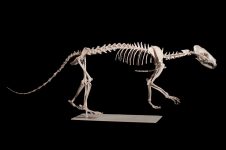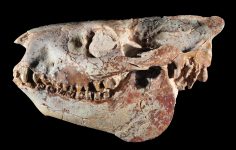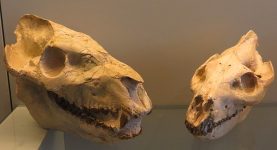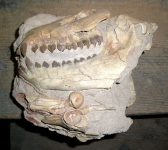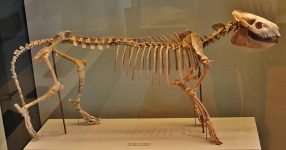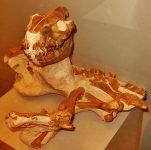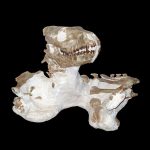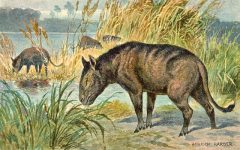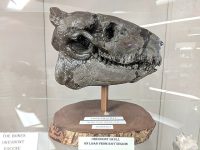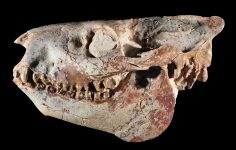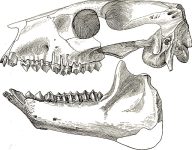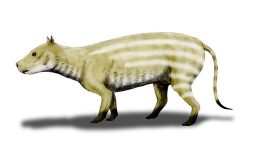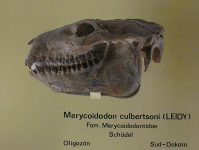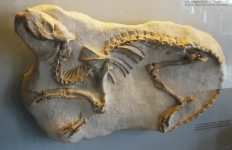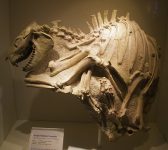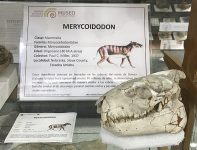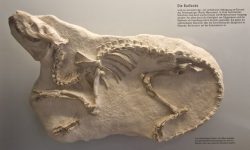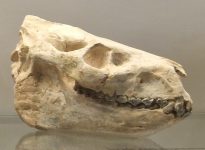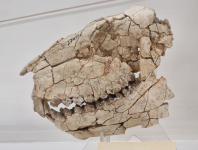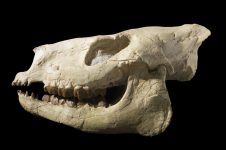OREODONT


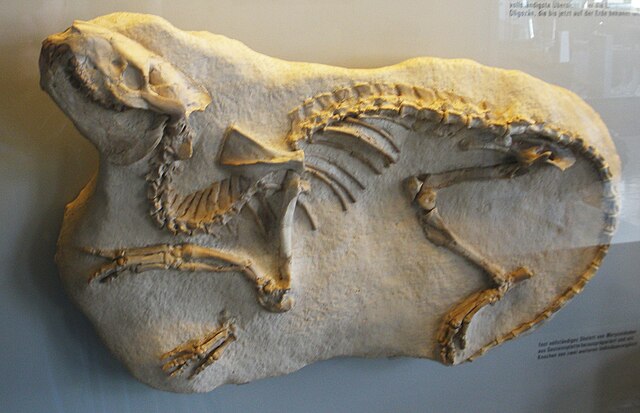
OREODONT
Oreodonts were a diverse group of extinct herbivorous mammals that flourished in North America during the Eocene to Miocene epochs, approximately 37 to 5 million years ago. These mammals were notable for their unique dental adaptations and ecological diversity, occupying a range of habitats from forests to grasslands. In this exploration, we delve into the anatomy, evolution, diversity, habitats, extinction, and scientific significance of oreodonts.
Anatomy and Physical Characteristics
Oreodonts exhibited several key anatomical features that distinguished them from other herbivorous mammals:
Dental Adaptations: They had specialized teeth adapted for processing a variety of plant materials. Oreodonts possessed bunodont molars with low cusps, which allowed them to grind and chew fibrous vegetation efficiently. These dental adaptations reflected their herbivorous diet and ecological niche.
Body Size and Build: Oreodonts varied in size from small, rabbit-sized species to larger forms approaching the size of sheep. They had compact bodies with relatively short limbs, indicating adaptations for terrestrial locomotion and browsing on low-growing vegetation.
Ecological Adaptations: Oreodonts were well-adapted to diverse habitats, including woodlands, savannas, and grasslands. Their dietary flexibility and ability to exploit different plant resources contributed to their ecological success during the Eocene to Miocene epochs.
Evolutionary History
Oreodonts evolved from early artiodactyl ancestors during the Eocene epoch, approximately 37 million years ago. They underwent significant diversification and adaptive radiation throughout the Eocene, Oligocene, and Miocene epochs, occupying various ecological niches and habitats across North America. Oreodonts were part of a broader radiation of herbivorous mammals during the Cenozoic era, alongside other groups such as camels, horses, and rhinoceroses.
Diversity and Classification
The oreodont family (Oreodontidae) encompassed numerous genera and species, each with unique adaptations and ecological roles:
Leptauchenia: Known for its slender build and elongated limbs, Leptauchenia was adapted for swift running and likely inhabited open grasslands and savannas during the Miocene epoch.
Merycoidodon: Commonly referred to as the “running pig,” Merycoidodon had a more robust body structure and likely fed on a mixed diet of grasses and shrubs. It inhabited various habitats, including woodlands and prairies, during the Miocene epoch.
Agriochoerus: Recognizable for its larger size and robust skull, Agriochoerus was adapted for browsing on tough vegetation and likely occupied forested habitats during the Miocene epoch.
Habitat and Feeding Behavior
Oreodonts were predominantly herbivorous mammals that fed on a variety of plant materials, including leaves, fruits, seeds, and grasses. Their dental adaptations allowed them to efficiently grind and chew vegetation, extracting nutrients essential for their growth and survival. Oreodonts likely played important roles in seed dispersal and nutrient cycling within their respective ecosystems, contributing to the maintenance of ecological balance and vegetation dynamics.
Extinction
The extinction of oreodonts occurred during the late Miocene epoch, approximately 5 million years ago, as part of broader ecological and environmental changes affecting North American ecosystems. Factors contributing to their decline and extinction may have included:
Climate Change: Shifts in global climate during the late Miocene, including cooling temperatures and changes in precipitation patterns, may have altered vegetation distributions and reduced suitable habitats for oreodonts and their food sources.
Competition and Predation: The emergence of new herbivorous mammals and predators, combined with changes in predator-prey dynamics, could have placed additional pressures on oreodont populations and contributed to their decline.
Ecosystem Dynamics: The loss of megafaunal grazers and changes in plant community composition may have disrupted ancient ecosystems and contributed to the decline and eventual extinction of oreodonts.
Scientific Significance
Oreodonts hold significant scientific importance as key indicators of ancient mammalian diversity, ecological adaptations, and evolutionary relationships within the artiodactyl order. Fossilized remains of oreodonts provide valuable insights into their anatomy, behavior, and paleoecological roles in North American ecosystems during the Eocene to Miocene epochs. By studying oreodont fossils, paleontologists can reconstruct past environments, track changes in mammalian biodiversity, and investigate the factors influencing mammalian evolution and extinction over geological time scales.
Conservation and Preservation
Efforts to protect and preserve oreodont fossils and associated geological sites are essential for maintaining their scientific and educational value. National parks, fossil reserves, and research institutions play crucial roles in safeguarding oreodont specimens, promoting public education, and supporting ongoing research into Earth’s ancient mammalian diversity and evolutionary history.
